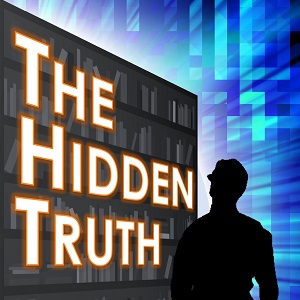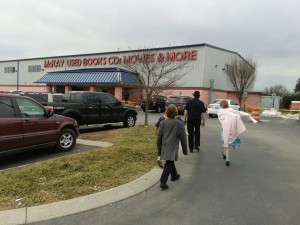 The Hidden Truth – Chapter 4 Notes
The Hidden Truth – Chapter 4 Notes
These notes are loaded with spoilers and further explanation for Chapter 4 of my forthcoming novel – The Hidden Truth. I suggest you read Chapter 4 first before continuing. Ready? Let’s begin.
I sprinkled a wealth of technical detail throughout The Hidden Truth. It’s not quite Victor Hugo lecturing at length upon the sewers of Paris, but I hope my readers will forgive my taking a paragraph or two to discuss such interesting topics as Radioisotope Thermoelectric Generators.
There’s a principle of drama called “Chekov’s gun” (after the Russian playwright, not the Star Fleet Officer):
Remove everything that has no relevance to the story. If you say in the first chapter that there is a rifle hanging on the wall, in the second or third chapter it absolutely must go off. If it’s not going to be fired, it shouldn’t be hanging there.
The Hidden Truth has a very conventional three act structure. Act 1 (Chapters 1-5) takes up about the first third of the book and introduces all the main characters. Act 2 (Chapters 6-9) is half the book, building the tension through to the climax at the end of Chapter 9. Then Act 3 (Chapters 10-12) takes up the final sixth of the book and resolves many, but not all the open plot threads and lays the foundation for the sequel. Technically, RTGs do come up again in the book, satisfying the principle of Chekhov’s gun. In a number of cases however, (this being one) I’m actually planting a seed that may not fully sprout until several volumes later. If you do run across isolated factoids, make a mental note. There’s usually a dramatic reason why that factoid is there.

There really is a centaur skeleton at the University of Tennessee. “The Centaur Excavations at Volos” is a work of art depicting a supposed archeological excavation of a “centaur.” This exhibition serves an important purpose – a certain amount of skepticism is appropriate, particularly when examining supposedly scientific findings. This highly realistic yet entirely fraudulent display teaches that lesson well. Given The Hidden Truth’s central conflict focusing on unraveling a fraudulent rewriting of scientific history to uncover the titular hidden truth, I thought a mention of the centaur would be appropriate when the novel’s action brought the narrator to the Hodges library.
Old books actually do have a very distinctive smell. I first encountered it as an undergrad when I heard about Ethan Allen’s Reason the Only Oracle of Man and tracked down and read a very old copy from the Purdue University Library. Like the narrator, the smell transports me back to the days of being a young student absorbing knowledge from ancient and archaic tomes. Alas, that’s an experience that may be going away. Modern high schools are now being built without libraries in a naive confidence that digital record keeping is fully adequate for the storage and preservation of knowledge. Like Amit, I’m concerned that this makes it awfully easy for an Orwellian overlord to rewrite history according to the demands of a present-day political correctness. Also like the narrator, I was well into my thirties before I developed a taste for bourbon or scotch.
The Mark Hofmann case offers excellent background reading for understanding the logistics of trying to rewrite history through clever forgeries. Hofmann, a Mormon, became disenchanted with his faith and set out to discredit it by rewriting early Mormon history with very clever forgeries. He used his career as a freelance used-book dealer and antiquarian to search for and “discover” old letters that supported his well-informed but potentially embarrassing theories on how the events of Mormon history might have occurred. He made a good living as prominent Mormons and church leaders acquired his forgeries. But he became greedy, and lived beyond his means. Desperate to stave off his creditors, he planted pipe bombs, murdering two people, and injuring himself. Salamander: The Story of the Mormon Forgery Murders is a good starting point, as is The Mormon Murders. This video provides a more recent update to the case.
Foldout pages are a problem with many scanned books, because many scanners are too lazy to capture content that does not fall neatly into the expected facing pages.The only scan I could find, from the 1910 edition of Fleming’s book, has this shortcoming. Here’s a comparison of the bibliography in the Tolliver Library copy to that in the Omnitia scan.


Jim Rautio, founder and CEO of Sonnet software, wrote an excellent article explaining the significance of Maxwell and the Maxwellians. If you don’t want to read Bruce Hunt’s even more comprehensive book, The Maxwellians, Rautio’s article is a good place to go to learn more. It is truly unfortunate and tragic that so many of the Maxwellians died so early. How different might the course of electromagnetics been if they had continued their work?
McKay’s Bookstore is a favorite stop when I take the family to Tennessee. Here’s a recent photo of me and my children on a research trip up to Nashville.
Look for Chapter 5: Independence Day to post Wednesday, May 4.

One thought on “Chapter 4 Notes: On Chekhov’s Gun, Mark Hofmann, and The Maxwellians”